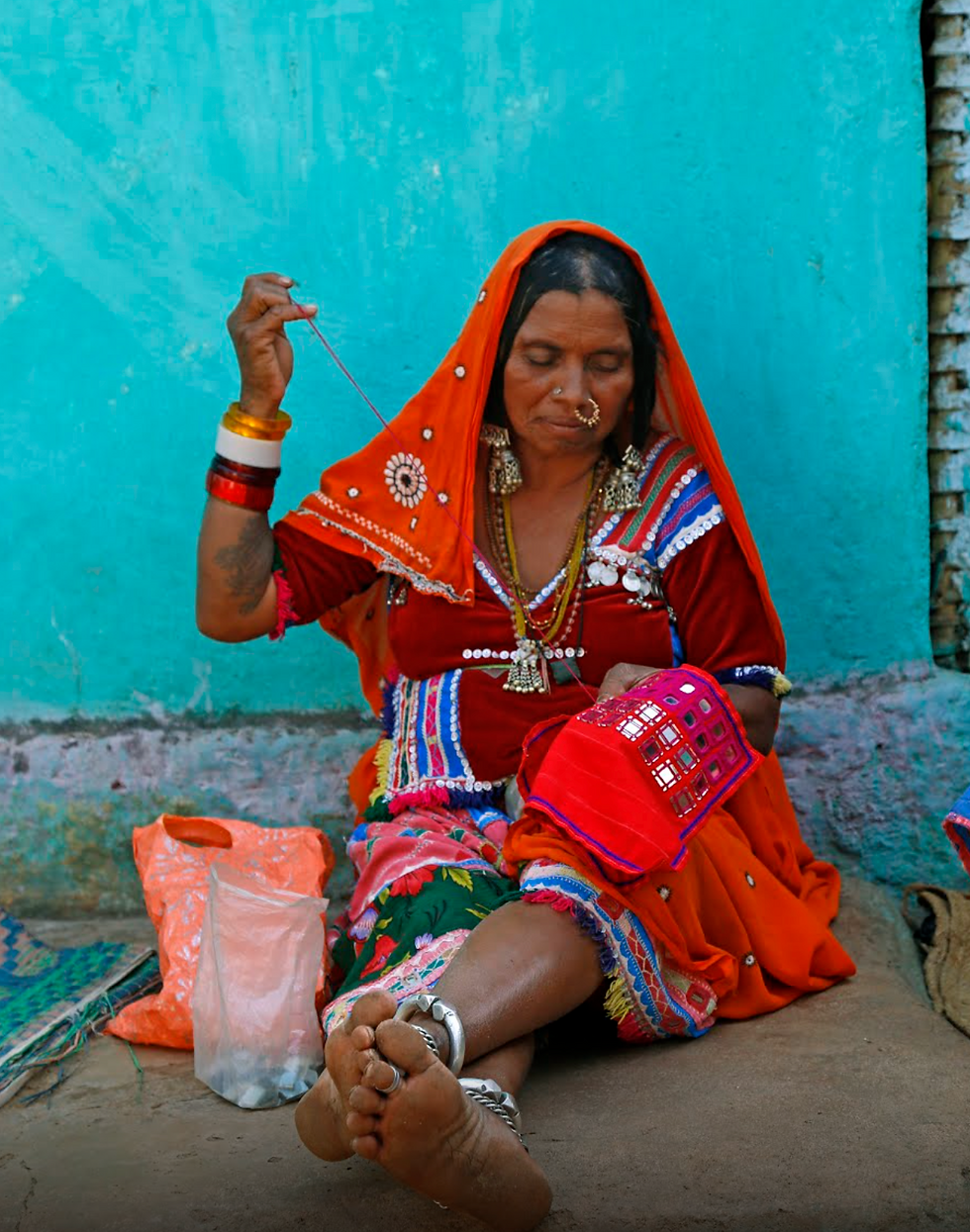Documenting: How Consumers Help Create their own Clothing in Hyderabad, India
- Niharika Elety
- Jan 9, 2022
- 3 min read
With the rise of fast fashion and colonialism, slow mindful collaborations between people and craft communities has reduced significantly. People have preferred buying readymade pieces from fast fashion retailers and are losing interest in intentional clothing. Many younger folx have little idea how intricate clothing is crafted and its importance to building a slow, sustainable future. In efforts to spotlight this process and garner interest, I documented how clothing is typically created by consumers in Hyderabad and India at large.
In countries in the Global South, supporting local crafts is accessible and deeply ingrained the culture.
Handicrafts celebrate and continue the stories of our lineage.

Charminar, Hyderabad
Many pockets of Hyderabad are filled with vibrant fabrics, textiles, dye houses, artisans and tailors all skilled in producing masterful pieces. Growing up, I like many of us tagged along with my mother and grandmothers to fabric stores and handicrafts exhibitions, heavily influenced my relationship with fashion. These experiences inspired us to create, up-cycle clothes and appreciate the time and effort craftsmanship takes.
The process typically goes like this:
Consumers pick out fabrics, get them dyed in their desired color, approach artisans for embroidery or block printing, and stitched it in their desired silhouettes.
Fabric Selection
Let's begin at the fabric store. Fabric stores display a plethora of regional textiles like patola, kalamkari, bandhani, banaras, and chikankari. Rows of plain pieces line the shelves as well like cotton, linen, silk, khadi, hemp in various colors and white to be dyed in the color of your choice. The store attendants guide consumers in how much is needed for a blouse, lehenga, kurta or pant and accordingly fabric is cut.

Fabric picking at Suryansh Fabric Store, Hyderabad
Dyeing Fabric
After fabric selection, if plain, consumers will go to a dye house to stain the fabric a specific color. Once the color is selected, the dyer creates the dye solution with water, mordant (to fix the color) and scoops of a powdered chemical or natural dye(typically indigo, madder root or turmeric). The fabric is added and the whole solution is brought to a simmer. The dyer constantly stirs the cloth and simmers the solution for 1 to 2 hours depending on desired vibrance. Finally the fabric is washed in water and left to dry.

Dye powders at a Dye House in Banjara Hills

Dying process with Indigo and Turmeric, Dye House in Banjara Hills

Deep red dye soaking at Dye House in Banjara Hills
Adding motifs to the fabric if desired is the next step. That can be done via block printing fabric painting, and embroidery.
Block Printing
Wood block printing is a method of stamping motifs on cloth using a wooden block and dye paste. There are many traditional block printing styles in India such as Ajrakh, Sanganeri, Bagh, Bagru, and Dabu.


Block Printing at Hyderabad Handicrafts exhibition

Fabric Painting
Fabric painting is one of the most treasured ways to adorn clothing. Kalamkari is the prominent fabric painting style in Hyderabad where a tamarind pen is used to draw flora, fauna and religious figurines on cloth with chemical or natural vegetable dyes. Finding artisans skilled in Kalamkari painting is becoming more difficult as mass produced copies have taken over.


Kalamkari artisans in Hyderabad Handicrafts exhibition
Embroidery
Embroidery is the most common way to dress up a plain fabric.There are various regional embroidery styles in India from Kutch, Chinkankari, Zardozi, Aari, Gota, Kantha and Phulkari. Typically one embroidery style is chosen and added to the sleeves of a blouse, border of a lehenga or dispersed throughout the fabric.

Finally the fabrics are taking to a tailor for stitching. The tailor co-creates the design with the consumer, sketches the design and takes body measurements accordingly. Typically with 1-2 weeks the garment is ready to be worn.

How can we create intimate relationships with our clothes and the process of creating them?
Can incorporating slow, intentional practices into our lives create the basis for a sustainable lifestyle?
We need to form deep connections with our clothing. Upcycling or participating in creating your clothing is one of the biggest ways to understand the different parts of the process and supply chain. I am challenging myself everyday to learn more about tailoring, the process of natural dying, and how plants are spun into fibers.
We must make systems we have in the Global South accessible around the world with weavers, tailors, available on site in stores. Creating environments for boutiques to create custom made creations that are accessible in price and location.











ความคิดเห็น